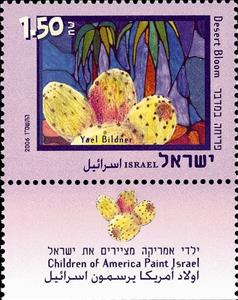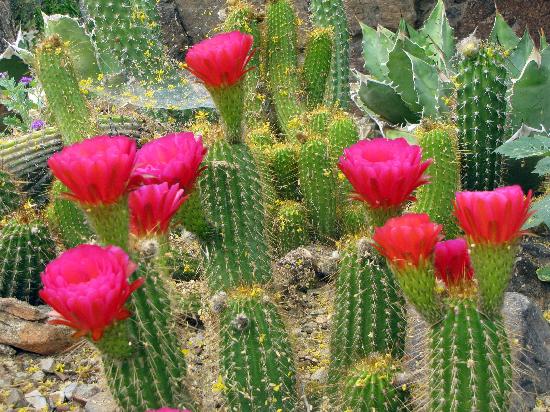Stamp with Collectible Margin: Desert Bloom, by Yael Bildner (Israel 2006)
Desert Bloom, by Yael Bildner (Israel 2006)
28 February (Israel ) within release American Children Draw Israel goes into circulation Stamp with Collectible Margin Desert Bloom, by Yael Bildner face value 1.50 Israeli new shekel
| Stamp with Collectible Margin Desert Bloom, by Yael Bildner in catalogues | |
|---|---|
| Michel: | Mi: IL 1855T |
| Stamp Number: | Sn: IL 1633T |
| Yvert et Tellier: | Yt: IL 1781T |
| Stanley Gibbons: | Sg: IL 1769T |
Stamp with Collectible Margin is square format.
Also in the issue American Children Draw Israel:
- Stamp with Collectible Margin - Colors of Israel, by Marissa Galin face value 7.40;
- Stamp with Collectible Margin - Desert Bloom, by Yael Bildner face value 1.50;
- Stamp with Collectible Margin - Harmony, by Michela T. Janower face value 2.40;
- Stamp with Collectible Margin - Together in Israel, by Jessica German face value 3.60;
Stamp with Collectible Margin Desert Bloom, by Yael Bildner it reflects the thematic directions:
A cactus (pl.: cacti, cactuses, or less commonly, cactus) is a member of the plant family Cactaceae (/kækˈteɪsi.iː, -ˌaɪ/),[a] a family of the order Caryophyllales comprising about 127 genera with some 1,750 known species.The word cactus derives, through Latin, from the Ancient Greek word κάκτος (káktos), a name originally used by Theophrastus for a spiny plant whose identity is now not certain. Cacti occur in a wide range of shapes and sizes. They are native to the Americas, ranging from Patagonia in the south to parts of western Canada in the north, with the exception of Rhipsalis baccifera, which is also found in Africa and Sri Lanka. Cacti are adapted to live in very dry environments, including the Atacama Desert, one of the driest places on Earth. Because of this, cacti show many adaptations to conserve water. For example, almost all cacti are succulents, meaning they have thickened, fleshy parts adapted to store water. Unlike many other succulents, the stem is the only part of most cacti where this vital process takes place. Most species of cacti have lost true leaves, retaining only spines, which are highly modified leaves. As well as defending against herbivores, spines help prevent water loss by reducing air flow close to the cactus and providing some shade. In the absence of true leaves, cacti's enlarged stems carry out photosynthesis.
Drawing is a visual art that uses an instrument to mark paper or another two-dimensional surface. The instrument might be pencils, crayons, pens with inks, brushes with paints, or combinations of these, and in more modern times, computer styluses with graphics tablets.
The Arecaceae is a family of perennial, flowering plants in the monocot order Arecales. Their growth form can be climbers, shrubs, tree-like and stemless plants, all commonly known as palms. Those having a tree-like form are called palm trees. Currently, 181 genera with around 2,600 species are known,
most of which are restricted to tropical and subtropical climates. Most palms are distinguished by their large, compound, evergreen leaves, known as fronds, arranged at the top of an unbranched stem, except for the Hyphaene genus, who has branched palms. However, palms exhibit an enormous diversity in physical characteristics and inhabit nearly every type of habitat within their range, from rainforests to deserts.



